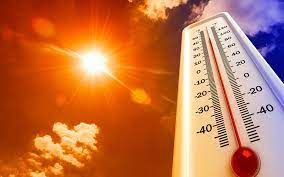Americans are feeling the heat – literally. June 2024 was the hottest month in history since 1850.
150 million people were on heat alerts last week in the US alone. Parts of Arizona reached 150 degrees Fahrenheit.
Extreme heat is a period of high heat – temperature > 90 deg F for 2-3 days. In extreme heat, the body works extra hard to maintain a normal temperature which can lead to illness or even death. Extreme heat is responsible for highest number of deaths annually among all hazards.
Climate change & urban development are increasing temperatures and risks of heat-related illness & injuries, posing significant threats to workers’ safety & productivity.
Jane Gilbert, Chief Heat Officer at Miami-Dade County, FL says there are health risks & economic burdens associated with extreme heat. On “who & where people are most at risk,” she said, “low income, those working outdoors & in urban areas (poor tree canopy, pavements, heat from buildings & cars).
Bank of America Institute says, “Rising temperatures increase economic costs, especially for lower-income households and workers in heat-exposed industries:
- Higher temperatures put over half of U.S. counties at risk for increasing energy consumption costs & associated expenses such as utility payments. As of March, the average total utility payments per customer was $300, one-quarter rise since 2019.
- Many households are impacted by climate hazards, but some are particularly susceptible to financial strain. Lower-income customers’ average utility payments are 38% higher in Mar 2024 than 2019 average.
- Rising temperatures are taking a toll on those working outdoors in heat-exposed industries. During warmer months, heat-exposed sectors have a lower inflow-to-outflow ratio (= profits). Long-term, high heat could reduce available jobs in certain sectors, amplifying economic costs.”
Regular hydration and taking strategic rest breaks in cool areas can preserve health & boost productivity.
With public education, policies & partnerships, heat related illness & deaths can be prevented. Cities, counties, & states must have a heat plan to reduce the health & economic effects of rapidly rising temperatures & extreme heat.






